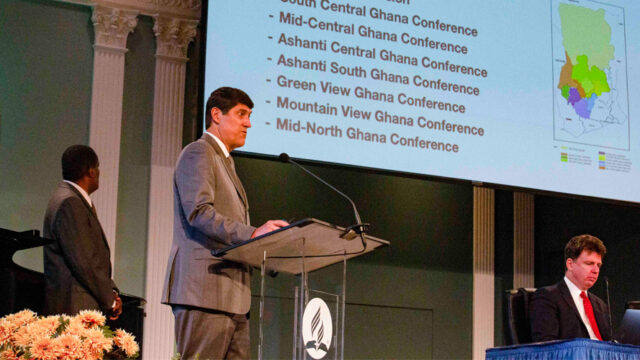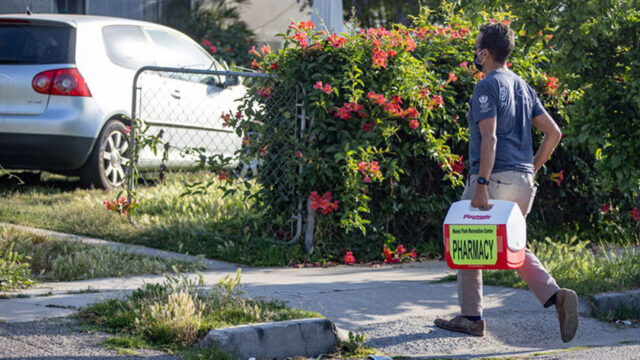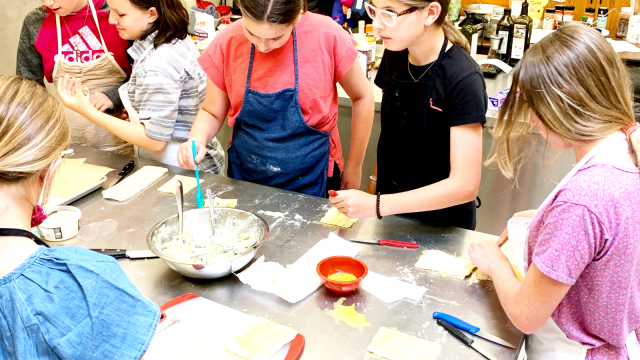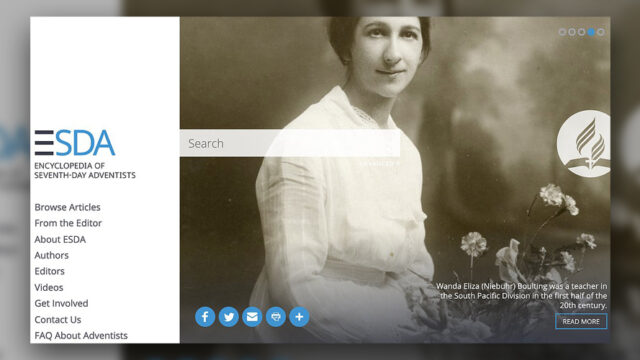The sanctuary reminds of God’s desire and intent to dwell, not just among us, but within us.

A few years ago my wife and I were privileged to visit the sequoia forests in northern California. We stood in awe among those massive trees. Those trees had lived through centuries of time, weather, and ecological circumstances. Forest fires, droughts, and pestilences have not stymied their growth. Those trees coped with the times that they had witnessed. They not only coped; they thrived resiliently and grew.
The past two years have been a laboratory in the alchemy of human resilience. Violence, social unrest, political upheaval, and cultural shifts born of the pandemic have exacted a multifaceted toll upon the world. Each nation, kindred, tongue, and people has been impacted by the scourge of COVID-19 and the ensuing quarantine. The immediacy of worldwide news coverage displays, in contrast, the depths of depravity among some citizens and leaders against the valor of first responders and people of conscience. We have coped and survived, and in many cases we have thrived.
MORE THAN SURVIVING
How we respond under duress as individuals, communities, and cultures gives a glimpse into the difference between coping and resilience. Coping as a stand-alone element is insufficient because merely coping can lead to the hopeless and mindless mining of a rut. Coping is often the reflexive recognition of an injury that may be moral, emotional, or physical. Repression is often the first medication to numb the pain. Coping, therefore, is the management of reactions that rarely ameliorate the wound or wounding circumstance.
Stress is everywhere. Good stress enhances our lived experience. Distress challenges us or is caused by the events and circumstances that we face. Our hopes, dreams, aspirations, and capabilities do not change. They may become frustrated and delayed, but their existence persists. A flat basketball is still a basketball, even if it won’t bounce. A stopped clock is still right twice every day.
Resilience, on the other hand, is resolve-deployed and resolution-employed. Resilience is vision-pursued and the construction of new realities from the ashes of our phoenix-like experiences. Resilience is finding a way to fix the flat basketball in order to dribble and play again.
“Resilience is the psychological quality that allows some people to be knocked down by the adversities of life and come back at least as strong as before.”¹ While resilience does include coping, it is only one of the ingredients.
Resilience is more than surviving. It is the art of bouncing forward. Most people are born with the innate capacity to fall, fail, regroup, and master new skills. That is how we learn to walk, talk, play, sing, and socialize. Failing forward is the end result of a resilient personality.
A BIBLICAL CASE STUDY
The biblical character David is a good example of a person who learned how to be resilient. A reflective assessment of King David shows that he experienced marginalization, he was charismatic and could be manipulative, he was not risk-averse, he was familiar with violence, and he struggled with adultery. Yet he maintained a heightened sense of justice and righteousness.
David grew up in a household in which he was the youngest and least among his siblings. Relegated to the dirty chore of shepherding, he spent a lot of time in isolation.
As his story unfolds, life added adventure, adversity, risk, and danger to his isolation. The sheep that he was caring for and guarding were attacked. No doubt he had been trained to watch out and guard against predators. Something within him—courage—drove him to confront and conquer the threats.
Though David was the youngest and least among his siblings, he had stability. He was gifted with optimism. After Goliath he went back to the field of battle again and again.
The first step in the construction of a resilient character is a healthy self-image seasoned with faith, spirituality, and optimism. That is developed by early immersion in a crucible of secure identity formation.
Failure, adversity, and unrelenting stress can chip away at a person’s sense of self. Implicit in the selfcare regimen is an embrace of the Sabbath and sanctuary principles.
Sabbath is the divine elixir for restoration of the imago Dei, the “image of God.” God reminds us weekly that everything required for humanity to survive was provided before we were created.
The sanctuary reminds of God’s desire and intent to dwell, not just among us, but within us. David embodied the prophetic exhortation that “we have nothing to fear for the future, except as we shall forget the way the Lord has led us.”²
David’s confidence in challenging Goliath was the fruit of his post-traumatic growth. In the storytelling he extolled the presence of God and faith in divine deliverance more than his own prowess.
The story does not tell us about David’s emotions after the victory celebrations had ended. Dave Grossman, in his seminal book On Killing, tells us that the backlash of the parasympathetic system occurs as soon as the danger and excitement is over, and it takes the form of an incredible weariness and sleepiness on the part of the soldier.³
Rest is an essential ingredient to resilience. It is in rest, reflecting, dreaming, telling, and retelling the crisis story that homeostasis and balance are achieved. Such calming techniques as music, meditating, exercising, and reading help the brain to adapt to stressors. Psychological parlance calls this neuroplasticity. It is defined simply as “your brain’s ability to grow, adapt, and change in response to experiences.”⁴
In the trenches of warfare, subterfuge, and sabotage, David demonstrated grit. His psalms and songs give evidence of his fatigue, fallibility, and faith. As we, the believers in a loving God, who are living in societies marred by sin, live on, we would do well to learn, employ, and teach others the science of resilience.
Optimism can be learned. We must learn and pair it with passion and perseverance as we prepare for the future and final crisis. The preparation of our characters to reflect Christ is of far greater value than the material that we may store for times of trouble.
The key theme in the quest for resilience is not perfection or bravado. It really is the intent to fail forward and to bounce back, better.
¹ https://www.psychologytoday.com/us/basics/resilience, Mar. 13, 2021.
² Ellen G. White, Life Sketches (Mountain View, Calif.: Pacific Press Pub. Assn., 1915), p. 196.
³ Dave Grossman, On Killing: The Psychological Cost of Learning to Kill in War and Society (Boston: Little, Brown and Company, 2009), p. 94. 4 J. Suttie, “Building Resilience,” Greater Good, Apr. 16, 2013, greatergood.berkeley.edu/article/item/building_resilience.








